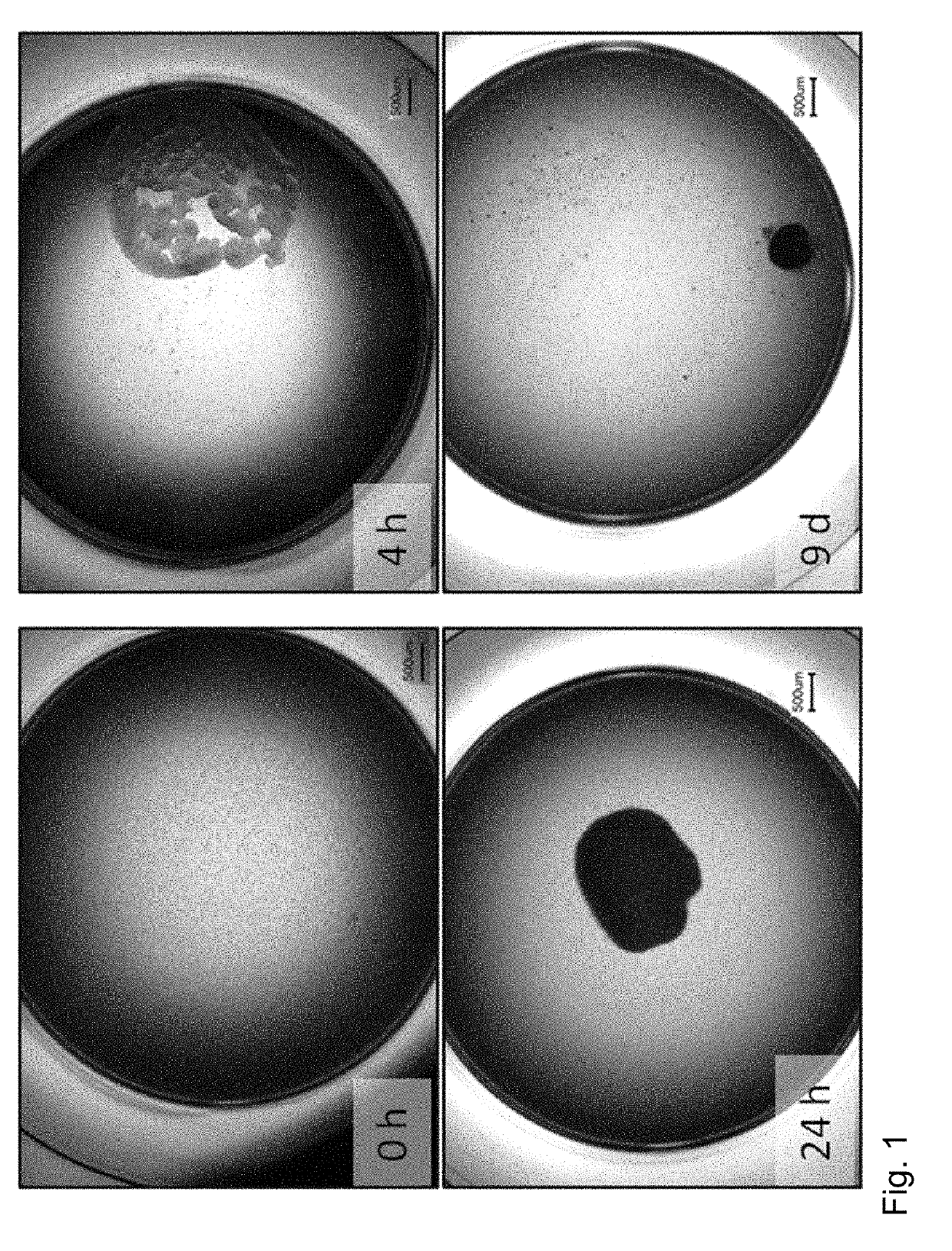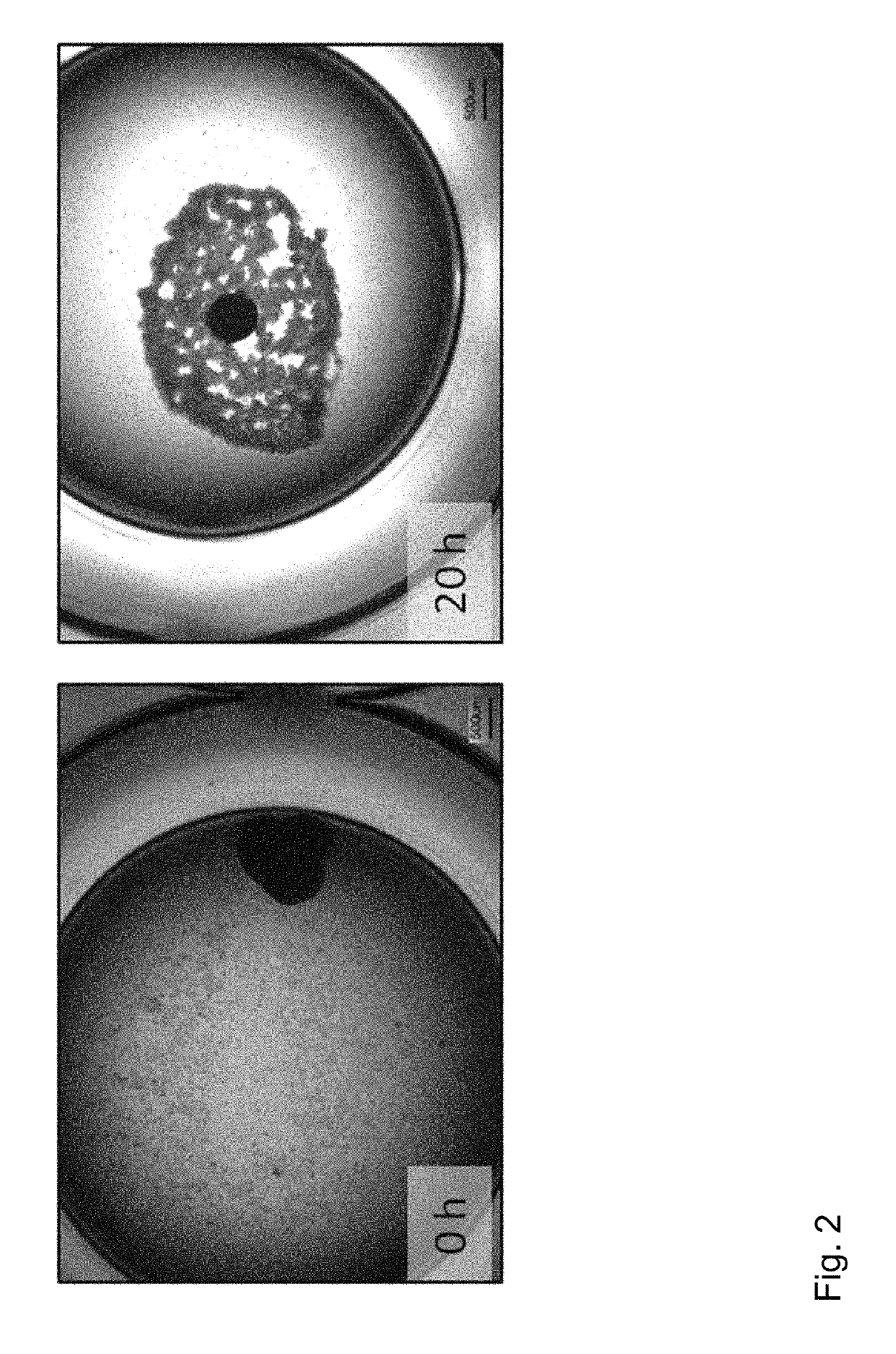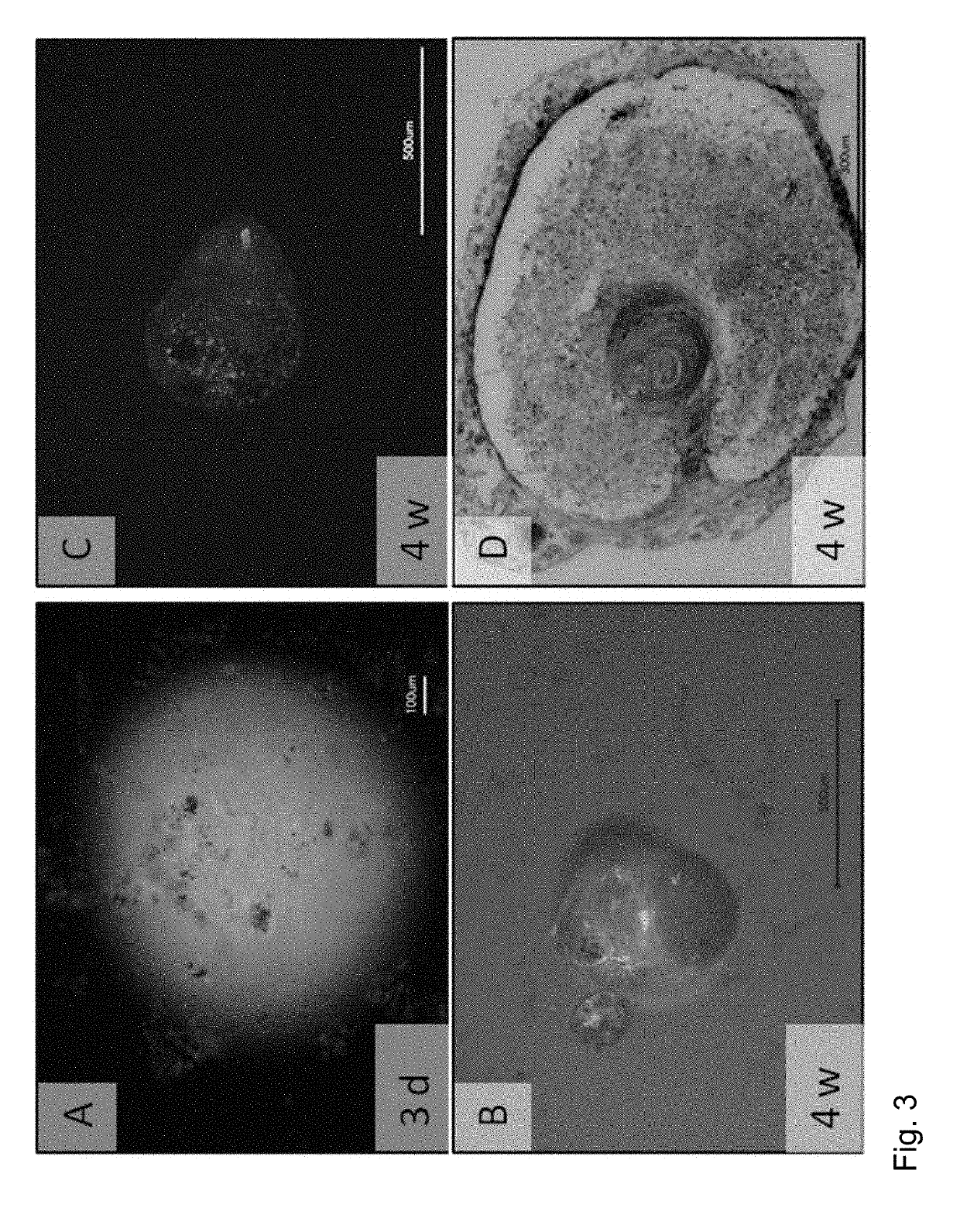Method of preparing an artificial tooth primordium in vitro and artificial tooth primordium derived therefrom
a technology of artificial teeth and primordium, which is applied in the field of preparing an artificial tooth primordium in vitro and an artificial tooth primordium derived therefrom, can solve the problems of significant surgical procedure, laborious follow-up care, and tooth destruction or loss
- Summary
- Abstract
- Description
- Claims
- Application Information
AI Technical Summary
Benefits of technology
Problems solved by technology
Method used
Image
Examples
Embodiment Construction
[0056]General Methods
[0057]Mesenchymal Dental Pulp Cell Isolation
[0058]Dental pulp cell isolation is performed according to a modified protocol from Gronthos et al. (A method to isolate and culture expand human dental pulp stem cells. Methods Mol Biol. 2011; 698:107-21).[0059]1 Extracted third molars from patients after informed consent are collected in DMEM containing 10% FCS and penicillin and streptomycin (100 μg / ml each) and stored at 4° C. for not longer than 24 hours.[0060]2 The biopsies are handled under sterile conditions throughout the whole procedure of cell extraction. Tooth crown and the root if present are wiped with 100% ethanol. To open the pulpal cavity, the tooth is split by mechanical cracking with a hammer[0061]3 Pulp tissue is removed with forceps and placed into a PBS containing petri dish.[0062]4 The tissue is then cut into small fragment which are then washed twice with PBS to remove debris and blood.[0063]5 Afterwards a digestion step is performed with a coll...
PUM
| Property | Measurement | Unit |
|---|---|---|
| diameter | aaaaa | aaaaa |
| diameter | aaaaa | aaaaa |
| time | aaaaa | aaaaa |
Abstract
Description
Claims
Application Information
 Login to View More
Login to View More - R&D
- Intellectual Property
- Life Sciences
- Materials
- Tech Scout
- Unparalleled Data Quality
- Higher Quality Content
- 60% Fewer Hallucinations
Browse by: Latest US Patents, China's latest patents, Technical Efficacy Thesaurus, Application Domain, Technology Topic, Popular Technical Reports.
© 2025 PatSnap. All rights reserved.Legal|Privacy policy|Modern Slavery Act Transparency Statement|Sitemap|About US| Contact US: help@patsnap.com



